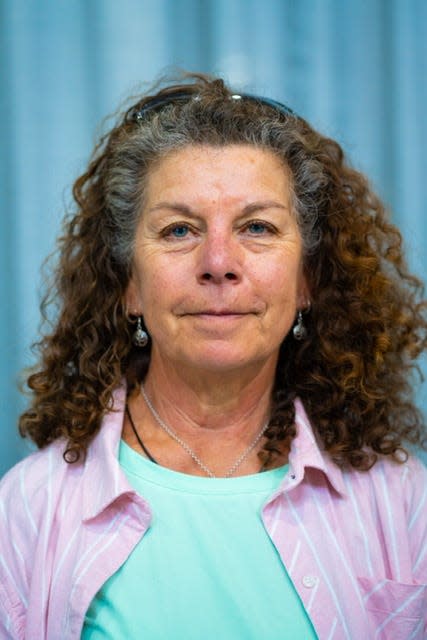My Turn: The science, and recycling, behind fall colors

On Saturday, Sept. 23, 2023 at 2:50 a.m., autumn officially arrived, and I feel awful that I didn’t remind you of this momentous occasion. But suffice it to say, Happy Fall, Y’all!
It is time for everything fall: pumpkins, pumpkin spice everything, football games, cooler temperatures, crisp blue skies, butternut and acorn squashes, farm fresh apples, sweatshirts or sweaters in the evenings, yellow, red and orange mums all over, cornstalks and scarecrows.
And what about those autumn leaves? Typically, we will have a glorious display of colorful trees, thanks to the 100+ varieties that the state of North Carolina can grow. The mountains are splendid with colors of yellows, oranges, reds, and the evergreens throughout.
The schoolteacher in me resurrects herself occasionally, so here she comes.
Why do leaves change color and drop? So, let’s start with some basics: plants make their own food through photosynthesis: the process of using the energy of sunlight, water absorbed by the roots and carbon dioxide, absorbed from the air, and changing this to glucose and oxygen.
The roots also absorb other required nutrients for the plants’ health. And this crazy reaction happens inside chloroplasts via a molecule called chlorophyll. And… chlorophyll is green. Thus, mostly green leaves on our plants.
As the Equinox happens, there is a change in the direction and amount of sunlight that the chloroplasts can absorb. With the reduced amount of sunlight, it becomes harder for the plant to create food, so the plant will do what it must to survive, and the chloroplasts, with the green pigment chlorophyll, begin to shut down, effectively losing the green color.
Since the green chloroplasts are reduced, other pigments previously masked by the chlorophyll shine through. The yellows and orange colors are due to carotenoids. The reds, purples or pink colors are from anthocyanins, which also protect the leaves from being sunburned or eaten by pests. The leaves will be shed from the plants because it would require too much energy to hold on to them.
The leaves drop to the ground where, if left on the ground, will decay into nutrients to feed more plants. In the forest or wooded lands, the leaves will break down with the help of bacteria, fungus, and insects, returning nutrients to the immediate soil.
Composting at home will do the same, taking leaves, addition of food waste, moisture, and mechanical mixing to break down the leaves even faster than nature, again providing a nutritious compost for lawns and gardens. Plants are the perfect example of recycling. When I think about aluminum, glass, or plastic bottles, I think great materials for continuous recycling. But the difference between these materials and leaves is that YOU must be the vector for recycling.
A plastic bottle on the ground is litter and will not decompose into anything nutritious. Aluminum cans and glass bottles are the same: they will recycle over and over, but you are the connection between trash or a second life as a new can or bottle. Remember that your plastic overwrap, plastic single use (that you really should be avoiding, and bring your own) grocery bags, the plastic bag over dry cleaning, the plastic sleeves over your newspaper, the plastic liners in cereal boxes, bubble wrap and plastic mailing envelopes are also recyclable at local grocery stores and at Kohls. And of course, cardboard, and mixed paper is recyclable so never a need to put that in the trash.
This fall, as you enjoy the beautiful colors, scents, and temperatures, remember that these beautiful natural recyclers, our plants and trees, are putting on a colorful display. Fall colors should remind you of your responsibility to also be the best recycler you can be as we all keep this planet turning towards the next Equinox in the spring.
Nan Kirlin is the recycling coordinator for Gaston County.
This article originally appeared on The Gaston Gazette: My Turn: The science, and recycling, behind fall colors
